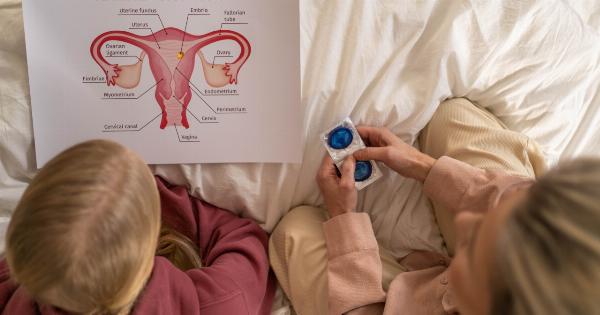When it comes to preventing unwanted pregnancies, various methods and techniques can be utilized. Two common practices believed to reduce the risk of pregnancy are using a condom and wearing underwear.
In this article, we will explore the effectiveness of these two approaches and shed light on their role in pregnancy prevention.
Understanding Condoms
Condoms are a popular and widely available form of barrier contraception. They are designed to prevent the sperm from reaching the egg during sexual intercourse.
Made from materials such as latex, polyurethane, or lambskin, condoms create a physical barrier that stops sperm from entering the vagina.
The Effectiveness of Condoms
When used consistently and correctly, condoms can greatly reduce the risk of pregnancy. In fact, condoms are considered to be one of the most reliable contraceptive methods available.
According to the Centers for Disease Control and Prevention (CDC), when used perfectly, condoms have a 98% effectiveness rate in preventing pregnancy. However, in real-life situations where mistakes or improper use may occur, their effectiveness decreases to around 85%.
How Condoms Work
A condom works by capturing semen and preventing it from entering the vagina during ejaculation. It also acts as a barrier against sexually transmitted infections (STIs).
As such, using condoms not only reduces the risk of pregnancy but also provides protection against STIs, including HIV.
The Importance of Proper Usage
While condoms are effective when used correctly, it is essential to ensure proper usage to maximize their efficacy.
This involves using a new condom for every act of intercourse, correctly putting on and removing the condom, and storing condoms properly in a cool, dry place.
Understanding Underwear and Pregnancy Risk
Wearing underwear is a common practice that people engage in daily. However, it is essential to clarify that the act of wearing underwear alone does not directly impact the risk of pregnancy.
Pregnancy occurs when sperm fertilizes an egg, which typically happens during sexual intercourse.
Supportive Role of Underwear
While underwear itself does not prevent pregnancy, it can play a supportive role in conjunction with other contraceptive methods.
For instance, wearing underwear alongside the use of condoms can provide an additional layer of protection by capturing any semen that might escape during intercourse. However, it is important to highlight that this extra protection should not replace the use of a condom, as condoms are specifically designed for contraception.
The Importance of Choosing the Right Contraceptive Method
Every individual has unique preferences and requirements when it comes to contraception. While condoms are a popular choice due to their effectiveness in preventing pregnancy and protecting against STIs, it is crucial to consider other options as well.
Some alternative methods include hormonal contraception, such as birth control pills or intrauterine devices (IUDs), which work by preventing ovulation or altering the lining of the uterus.
The Role of Communication
Effective communication with sexual partners is vital when choosing a contraceptive method that suits both individuals’ needs.
Discussing options and concerns can help in finding the most suitable method and ensuring mutual understanding and consent.
Conclusion
In conclusion, using a condom and wearing underwear can contribute to reducing the risk of pregnancy when used in conjunction with each other.
While condoms are highly effective in preventing both pregnancy and STIs, proper usage is essential to maximize their efficacy. Underwear, on the other hand, does not directly prevent pregnancy but can offer an additional layer of protection.
It is crucial to note that selecting the most appropriate contraceptive method should be done based on individual needs and preferences, and effective communication with partners is key in choosing the right method for both parties.






























